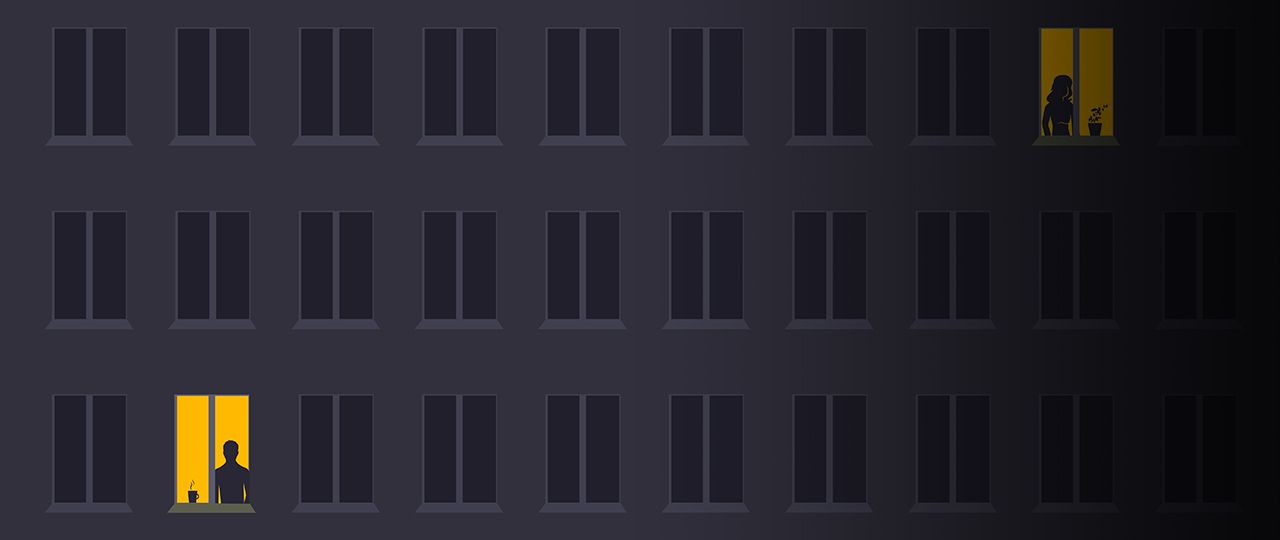
Vanessa Hale
Director, Research


Director, Research
From impacting on our personal sense of happiness, to increasing both physical and social wellbeing, the benefits of co-living have been proven for young and older people alike.
In the wake of the pandemic, the risk of social isolation and loneliness are more universal than ever before. And, with workplaces shifting to virtual environments and cities adapting to changing social parameters, there is much to suggest that at least some of the changes we have experienced over the past year will persist long after the pandemic has reached its conclusion.
And so, now seems a prime opportunity to re-evaluate our approach to living, asking: what is it about community living that helps us feel so much more alive?
Understanding loneliness
Loneliness is globally recognised as one of the most significant health concerns we face today. Not only is it associated with mental health conditions including depression and anxiety, but it can also be linked to a number of physical health concerns – coronary heart disease, high blood pressure, strokes and obesity are all far more likely when loneliness is a contributing factor.
You may have heard about the so-called ‘loneliness epidemic’, particularly in relation to older people or people in retirement. Loneliness, however, is not an issue exclusively linked to older people. Young people are equally at risk of suffering as a result of social isolation.
Take students, for example. Recent statistics indicate nearly a third of students feel lonely on a weekly basis, with 15.8% reporting feelings of loneliness every day of term time. It is also key to note that students who live alone are at far greater risk of feeling isolated, than those living in dorms or with a partner or friend.
By looking at the proven success of retirement communities, let’s consider whether communal living schemes such as Co-living and Build-to-Rent might be the key to future happiness.
The proven benefits of retirement living
Retirement Living has become increasingly popular over the last decade, providing a range of housing options to support the diverse needs of our aging population, including tackling loneliness.
There are many types of later-life communities, ranging from independent retirement villages with optional assisted living to residential options for those who benefit from more hands-on care. What they all have in common, however, is a focus on creating a supportive community that encourages people to stay socially active and engaged.
Research shows older people are both healthier and more active in retirement communities. So much so, that 71% of residents consider moving to a retirement community as an opportunity to make new friends.
Furthermore, those who live in retirement homes or villages are also more likely to say that they ‘often enjoy life’ – 70% compared with just 48% of non-residents.
The reasons behind this shift encompass everything from lower stress levels on account of upkeep and repairs to their property, to better access to health and fitness resources and, of course, a sense of community amongst their neighbours.
Tackling loneliness in a post-COVID world
Recent studies suggest that feelings of loneliness more than doubled over the lockdown period, with almost a quarter (24%) of adults in the UK experiencing loneliness as a result of coronavirus. This could place millions more people at long-term risk of health complications, both physical and emotional.
Certain demographics are at greater risk of experiencing a heightened sense of loneliness as a result of the pandemic than others. Young adults, women, people with lower education or income levels, the economically inactive, people living alone and people living in urban areas are all groups recognised to have been more susceptible to loneliness during periods of social restrictions.
Students are also listed as being at greater risk of suffering the effects of social isolation.
So how can we take what we know about the success of retirement living, and use it to tackle loneliness in other increasingly vulnerable demographics?
Community living
London Older Lesbian Cohousing (LOLC) is just one example of a co-living community on a mission to tackle loneliness. Recognising that older LGBT people are more likely to be single, live alone and rely on external services for support, LOLC is a purpose-built co-living environment that provides a safe space for older LGBT women to feel at home.
In Australia, a number of similar spaces have been established for single parents. There’s even an online platform, ShareAbode, designed to help connect single parents for shared living arrangements.
Across the pond in the US, companies like OpenDoor and WeLive are also providing a number of co-living schemes to all ages and demographics across major cities. This is not dissimilar to London-based companies such as Quintain Living and The Collective. While not targeting specific demographics, these are intended to provide shared living spaces that include communal dining, relaxation and work areas, which enable people feel connected even while living alone.
The rapidly growing Build-to-Rent sector is likewise placing community at the heart of its developments, with shared amenities, including green spaces, and gyms, creating a place for its residents to mix and interact with each other – all measures designed to assist in reducing isolation and loneliness.
If there’s one thing we can take away from the past year, it is that no matter your age, gender or occupation, the effects of loneliness can feel just as urgent as any pandemic. And yet, this might just be one plague we know how to beat.
View our previous articles on the future of housing or download our Platinum Generation e-book, to understand more about the benefits of retirement living.